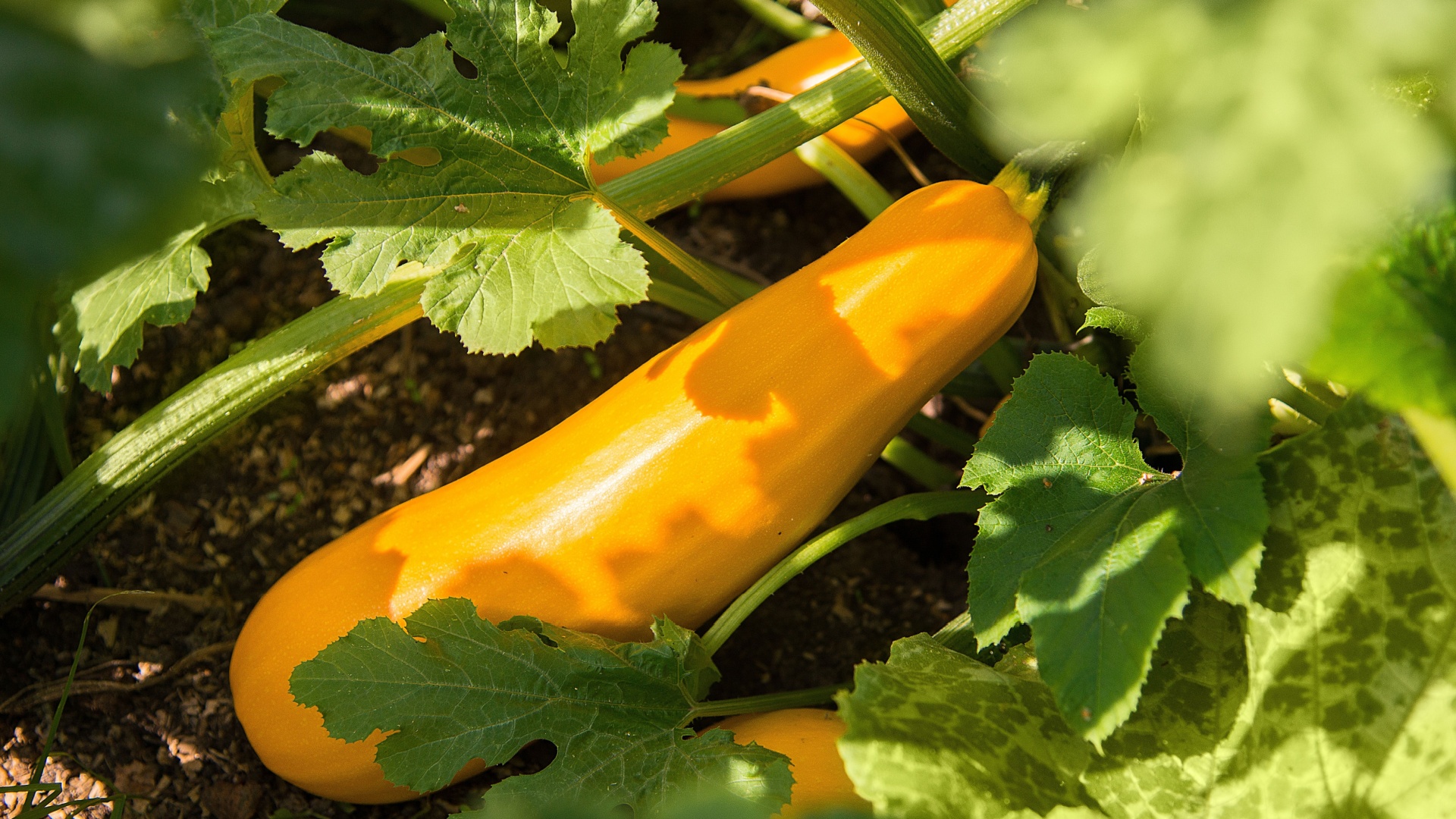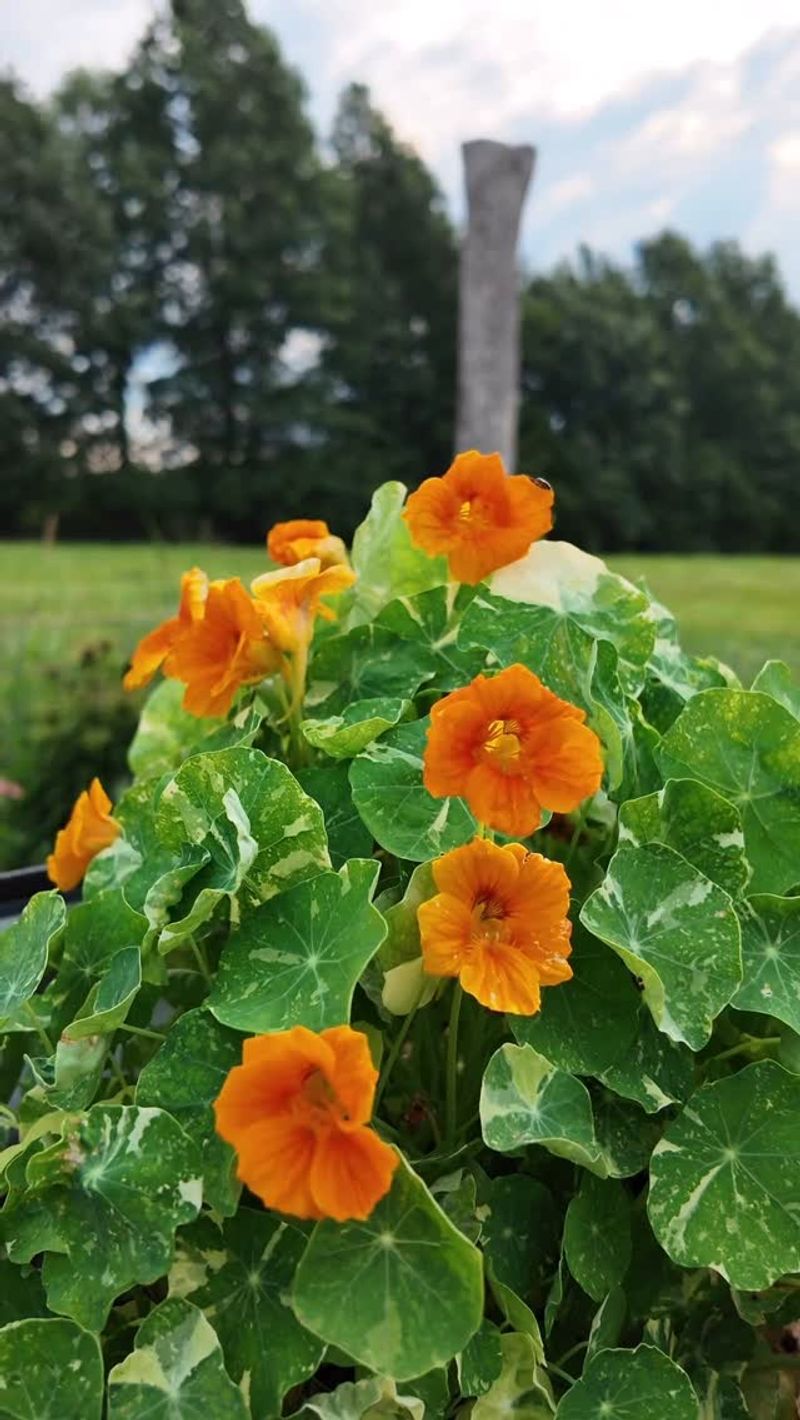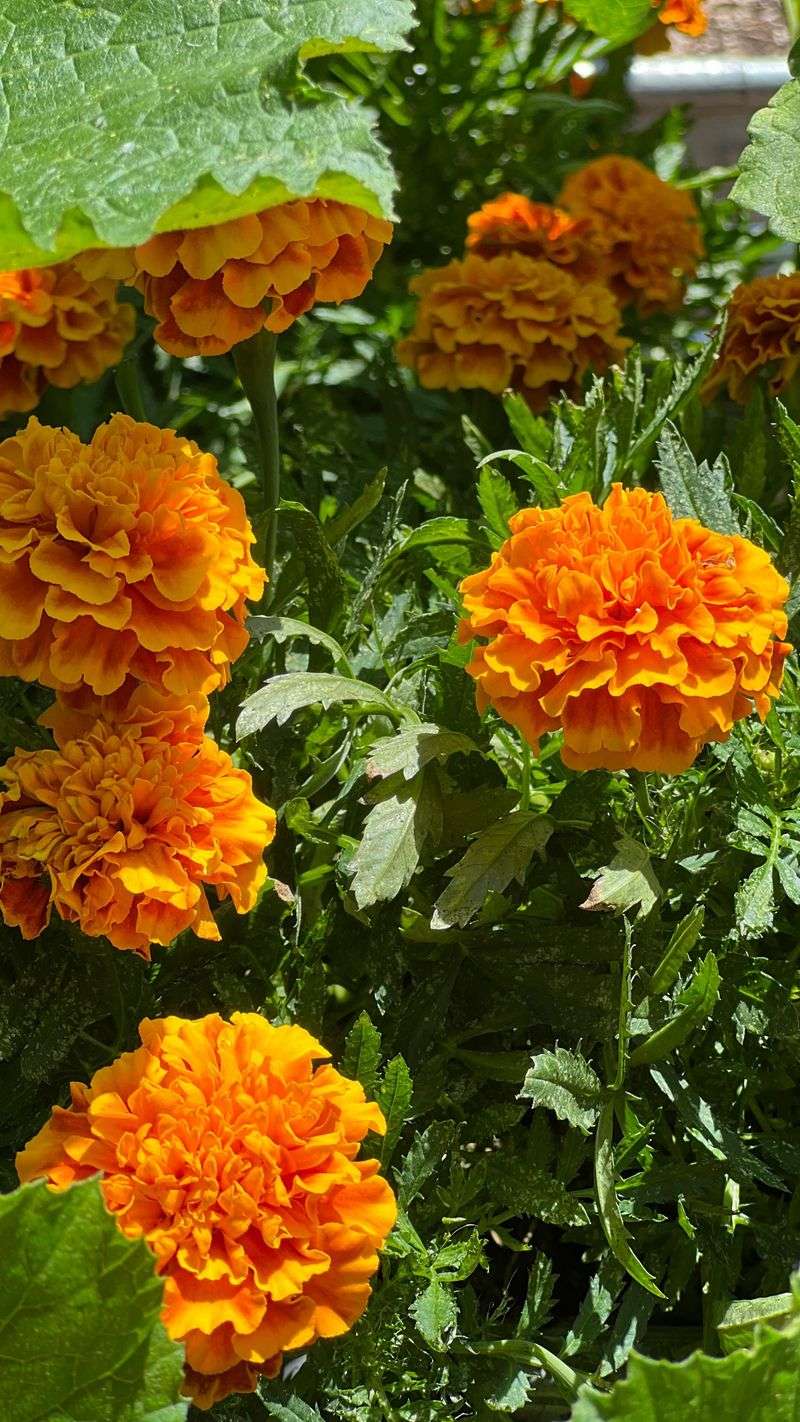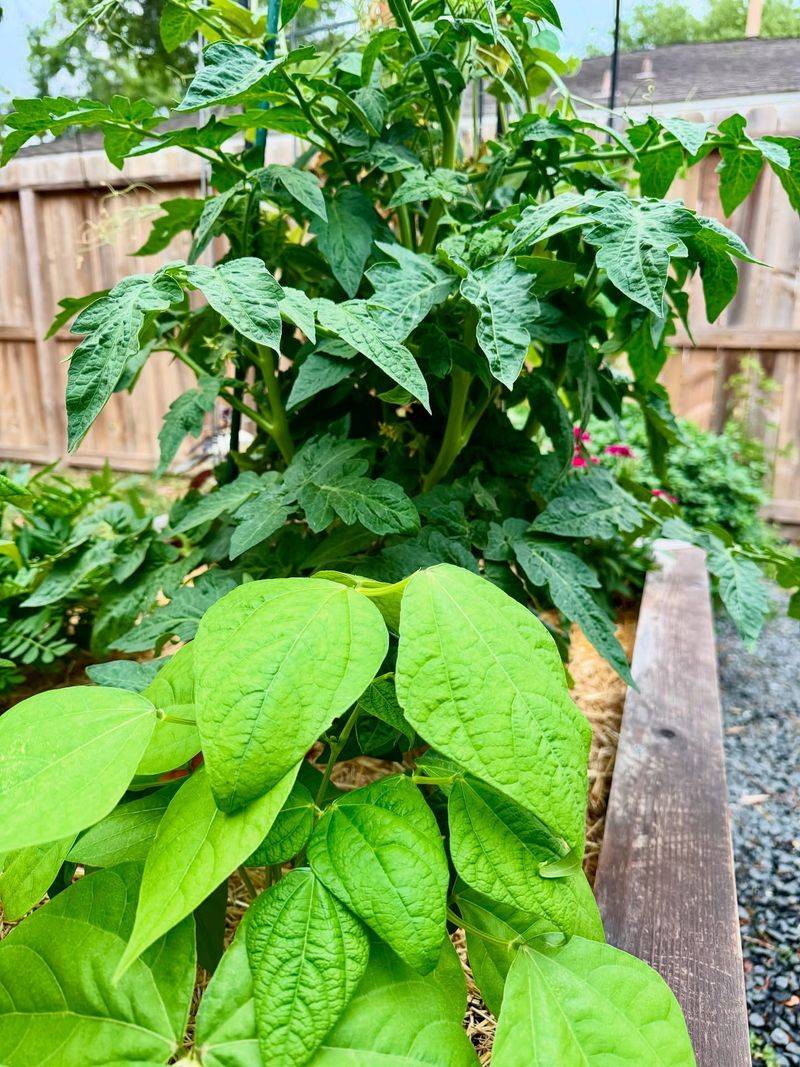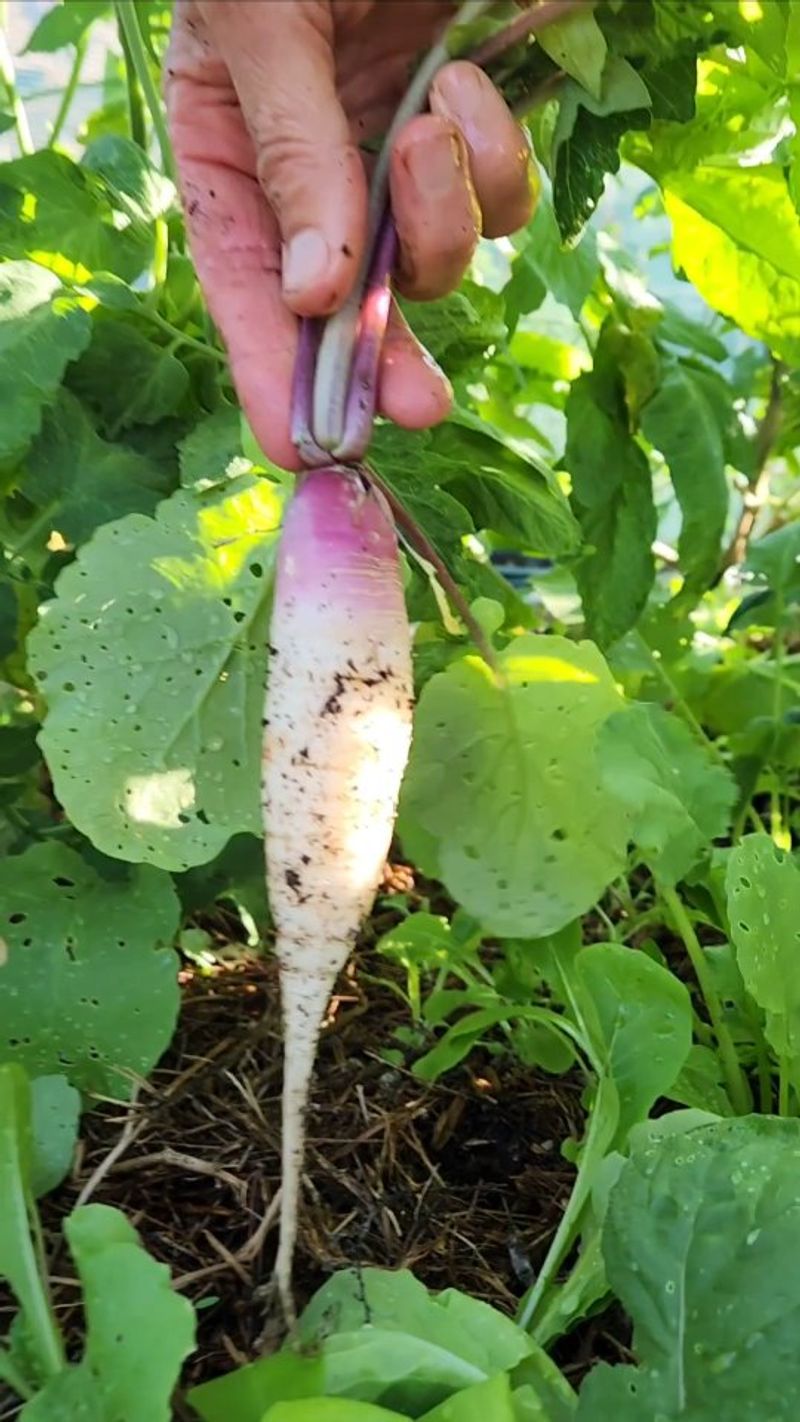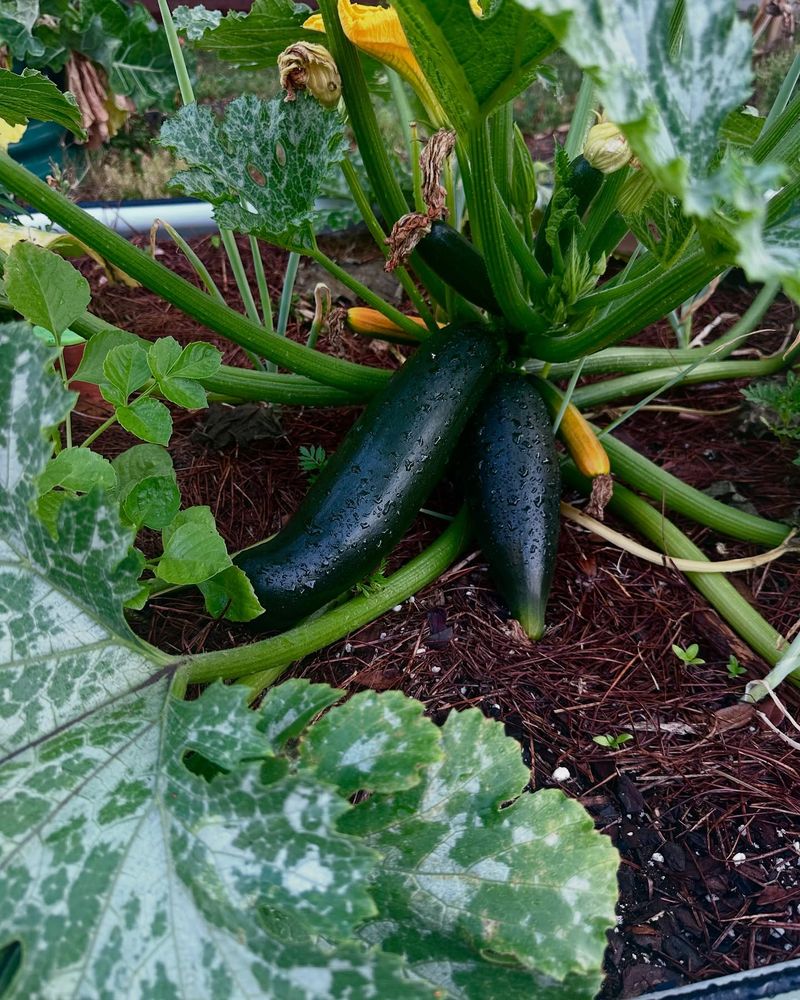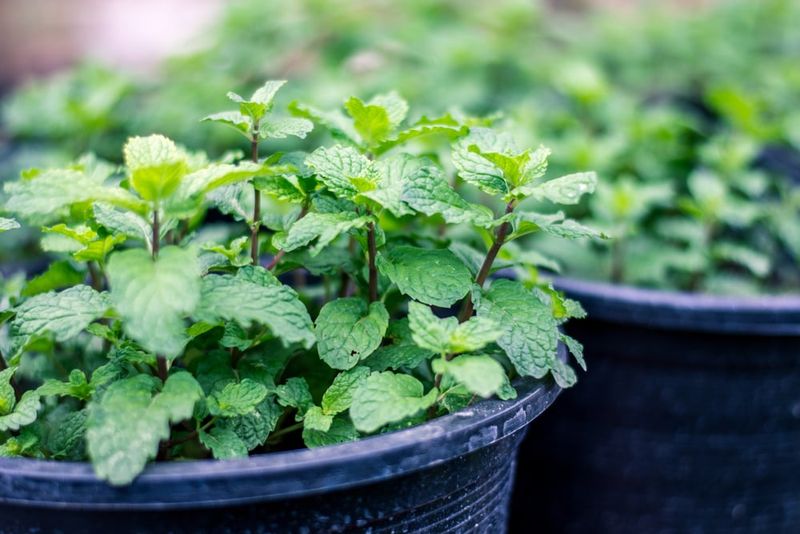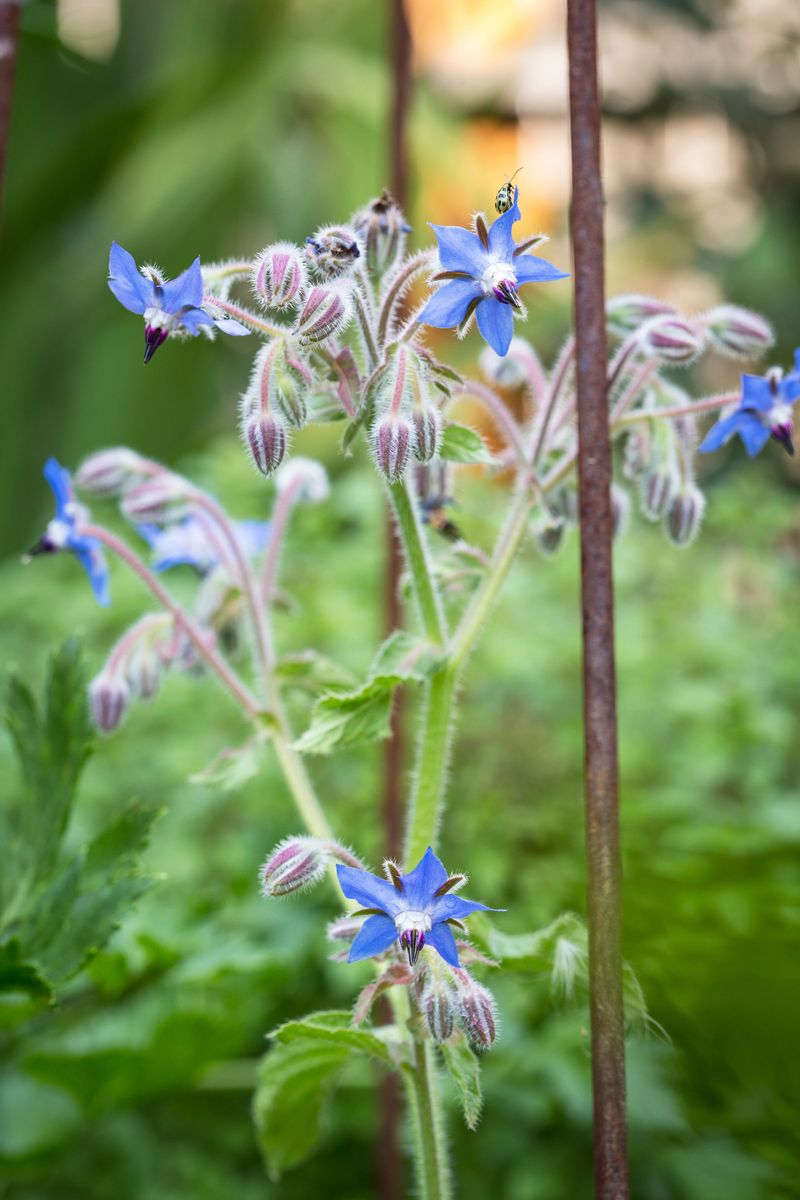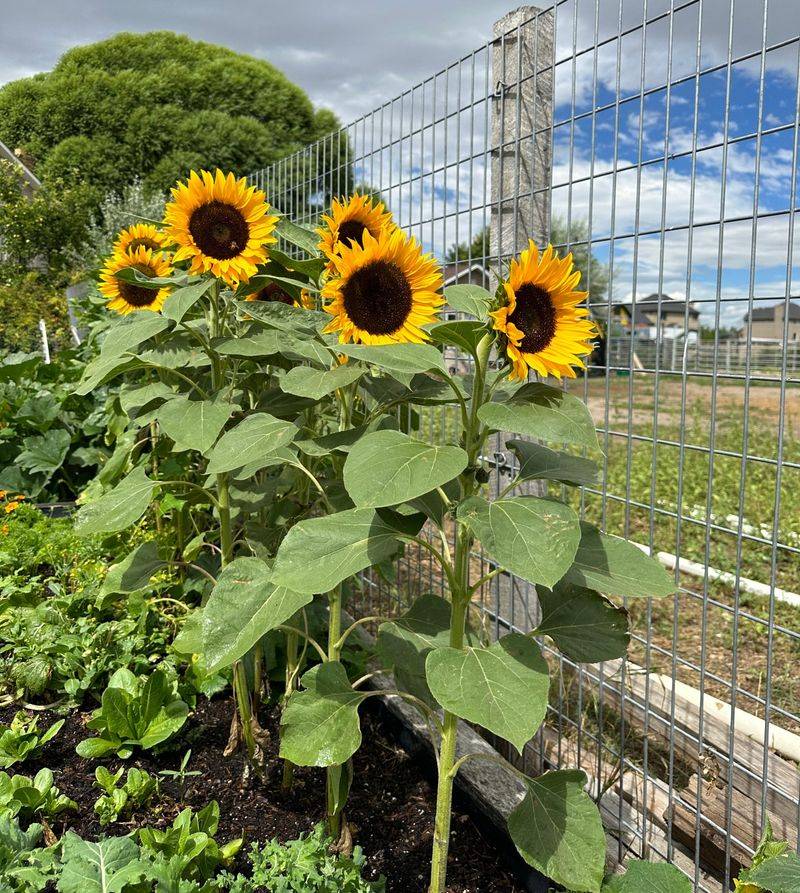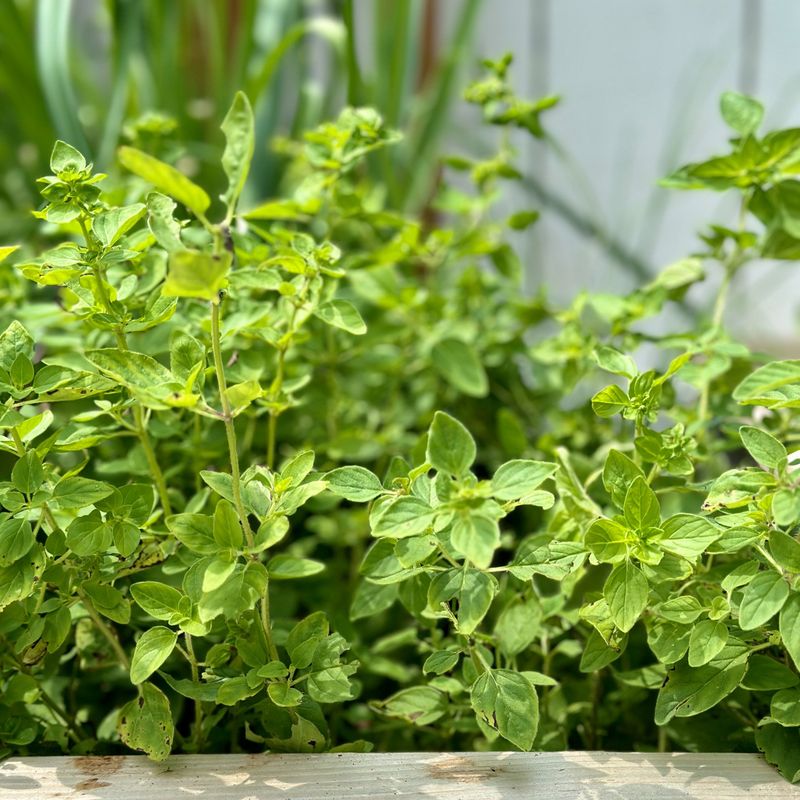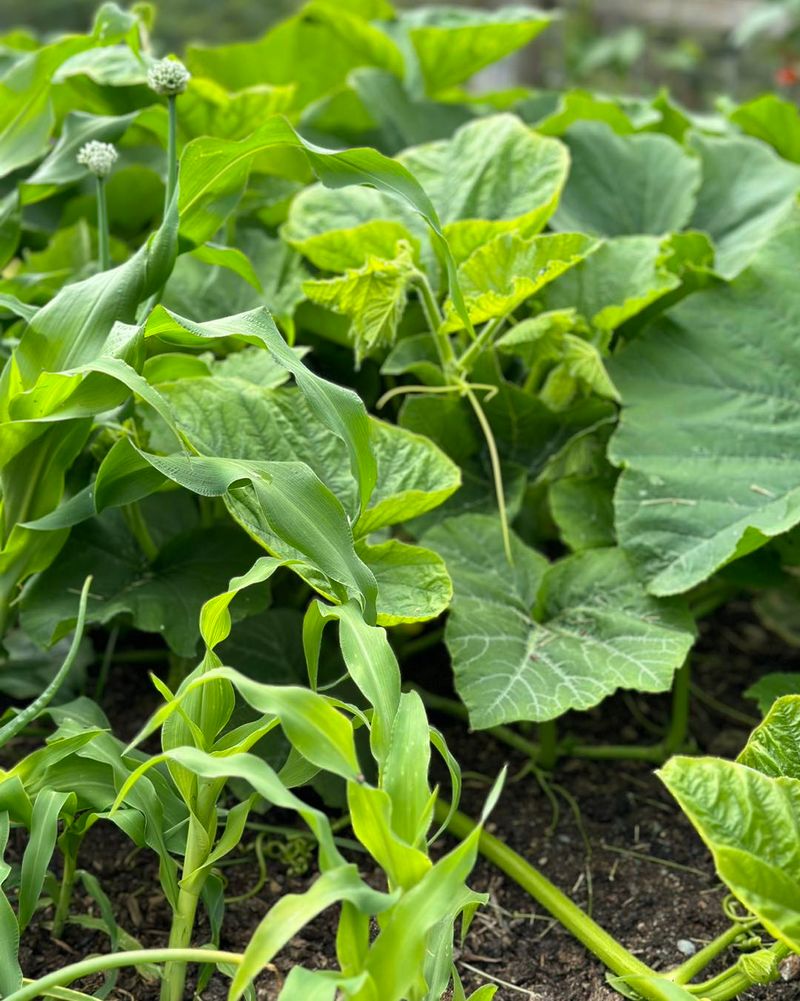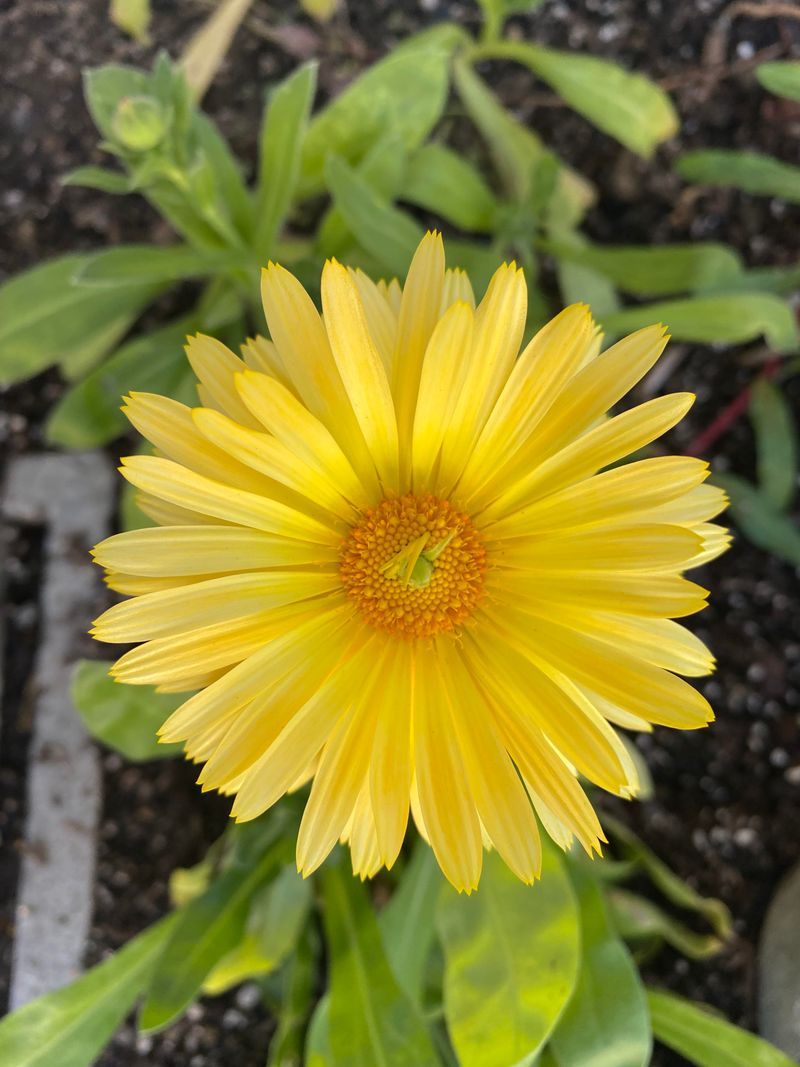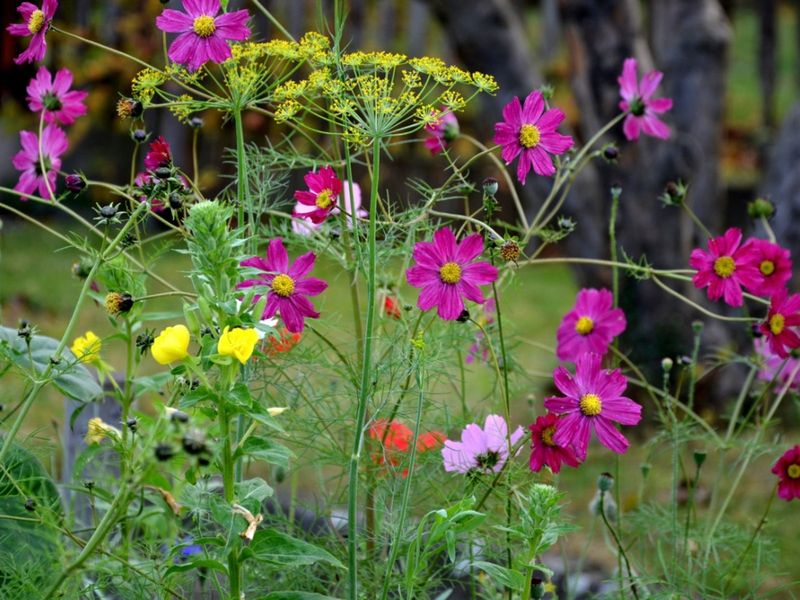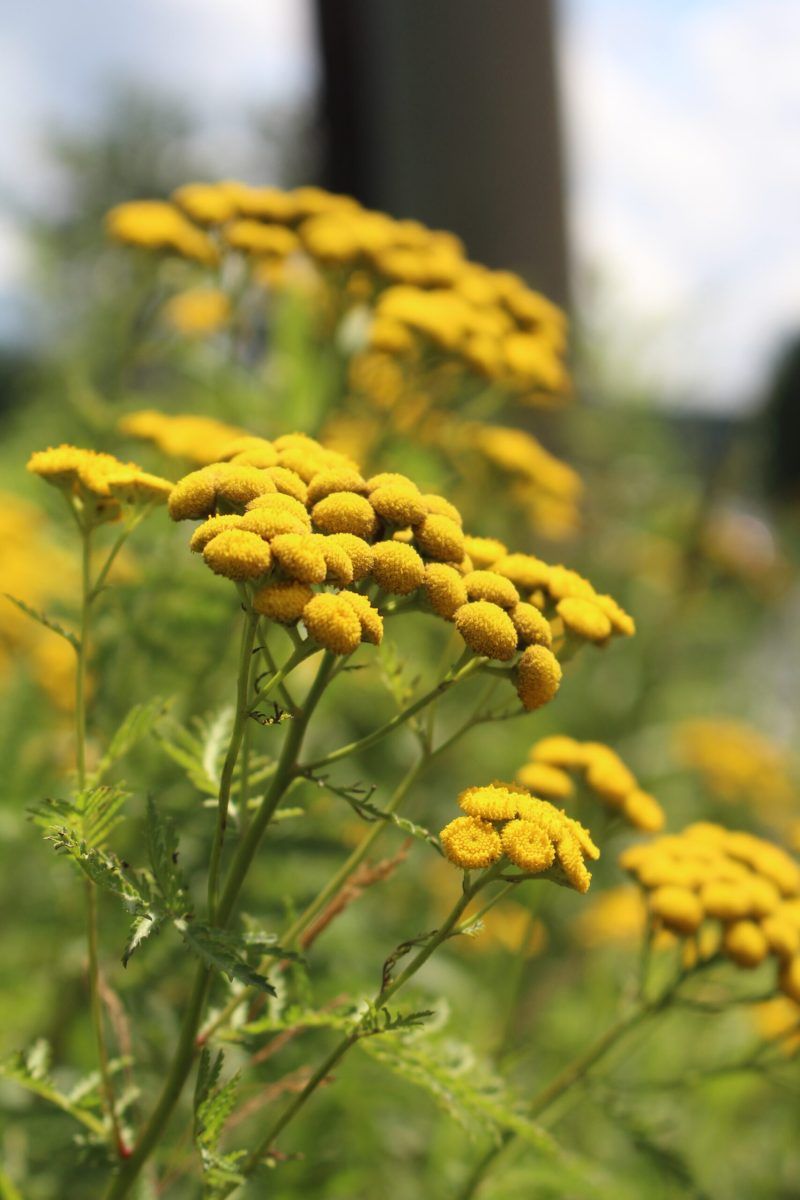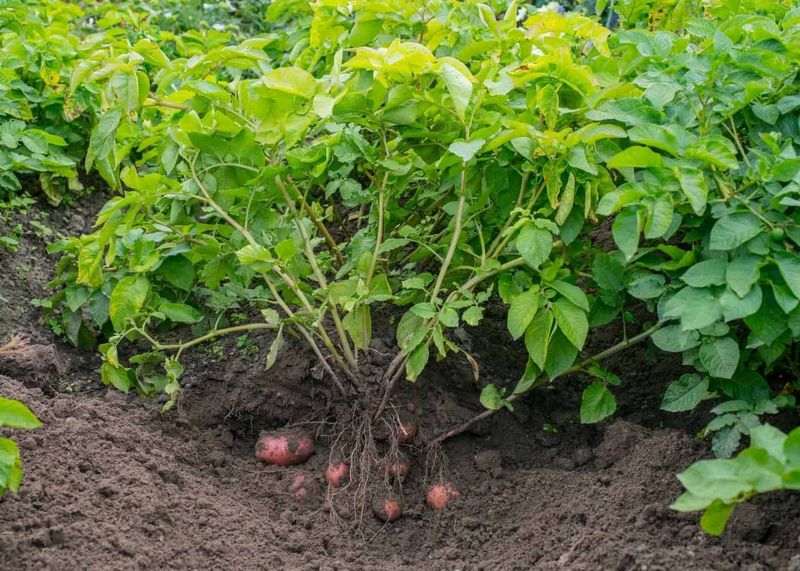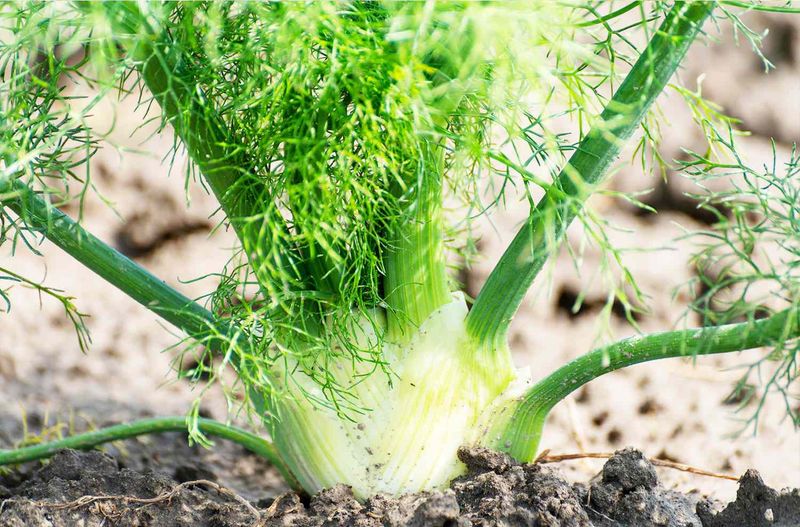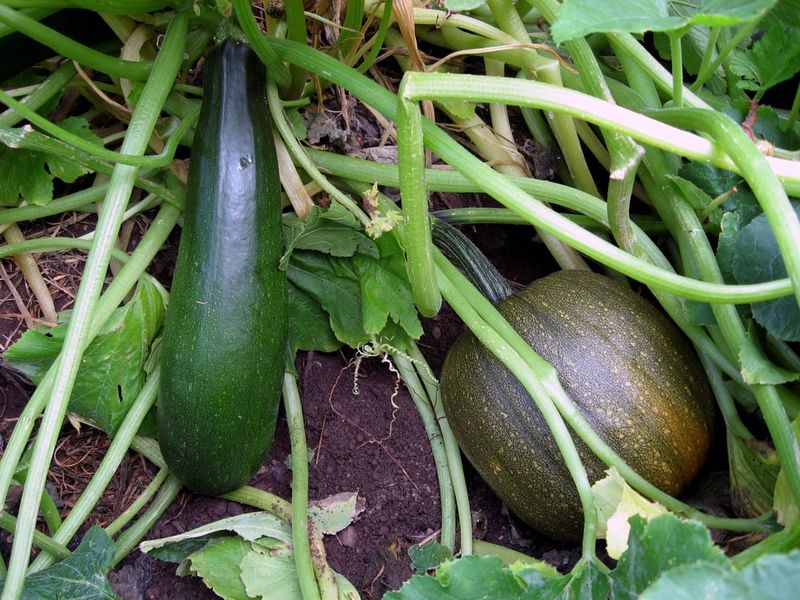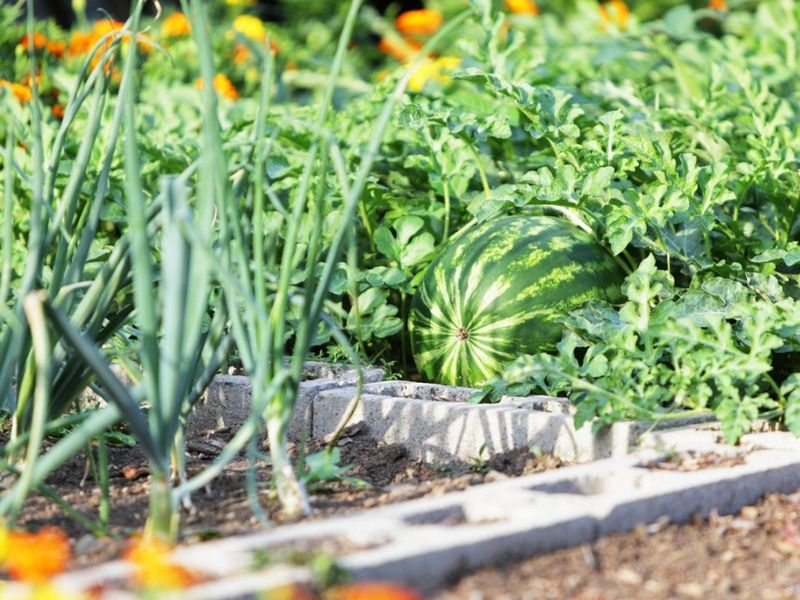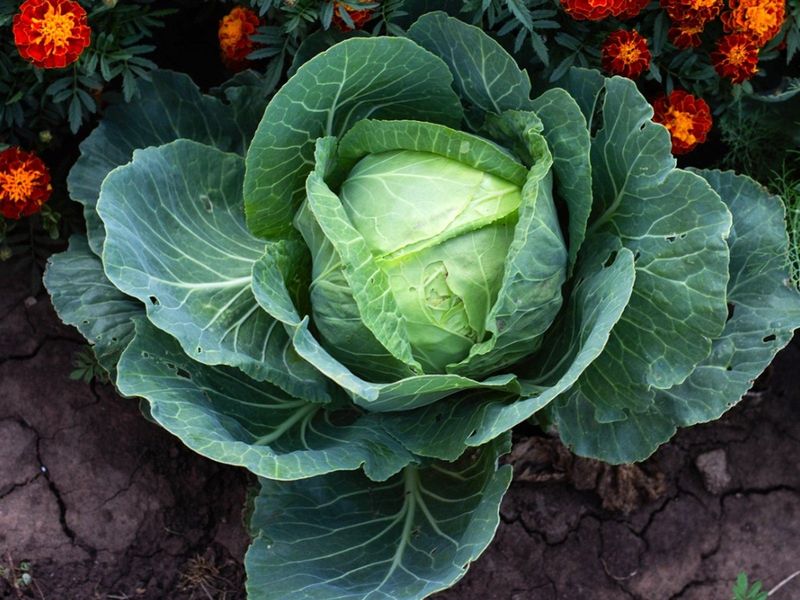Want to grow bigger, healthier summer squash with fewer pests and less fuss? The secret might be in who you plant next door. From pollinator magnets to pest-repelling heroes, these 14 companion plants give your squash the support it needs to thrive.
But not every plant plays nice—watch out for 5 bad matchups that can stunt growth, attract pests, or hog vital nutrients.
1. Nasturtiums: Colorful Pest Distractors
Vibrant nasturtiums act as living decoys in your garden. Their bright flowers lure aphids and squash bugs away from your precious summer squash plants, serving as sacrifice plants that protect your harvest.
The edible flowers add a peppery kick to summer salads, making nasturtiums doubly useful in your garden space. Plant them around the perimeter of your squash patch for maximum pest protection while adding splashes of orange, yellow and red to your garden.
2. Marigolds: Nature’s Pest Control Specialists
Marigolds release a natural chemical from their roots that repels nematodes and other soil pests that might damage squash roots. Their strong scent confuses many flying insects that typically target squash plants.
Plant these golden guardians between your squash hills or as a protective border. French marigolds work particularly well for this purpose, with their compact size and pest-repelling abilities. The cheerful blooms also attract beneficial insects like ladybugs that hunt down aphids.
3. Beans: Nitrogen-Fixing Friends
Beans perform garden magic by converting atmospheric nitrogen into a form plants can use. This natural fertilization process benefits hungry summer squash plants, which require plenty of nutrients to produce their abundant harvests.
Pole beans can climb up the same trellis as your squash, creating a space-efficient vertical garden. The beans’ shallow roots don’t compete with the deeper squash root systems. Try planting bush beans around the perimeter of your squash patch for a productive partnership.
4. Radishes: Quick-Growing Protectors
Radishes mature in just 3-4 weeks, making them perfect temporary companions while your squash plants are getting established. Their pungent odor naturally deters cucumber beetles and squash borers – two notorious squash enemies.
Sow radish seeds between young squash plants early in the season. By the time your squash needs more space, you’ll be harvesting the radishes. Some gardeners even leave a few radishes to flower, as the blossoms attract beneficial pollinators that help with squash fruit development.
5. Dill: Beneficial Insect Magnet
Feathery dill attracts helpful predatory insects like wasps and ladybugs that feast on squash pests. The delicate yellow flowers become buzzing hubs of activity, bringing in pollinators that improve squash fruit set.
Allow dill to self-seed around your garden for continuous protection. Its aromatic qualities may also enhance the flavor of nearby squash. Just keep dill away from your cucumber plants, as they don’t get along well, but dill and summer squash make excellent garden companions.
6. Mint: Squash Vine Borer Deterrent
Mint’s strong aroma naturally repels squash vine borers, those destructive pests that can devastate squash plants. The cooling herb creates a scent barrier that confuses these moths and prevents them from laying eggs on your squash stems.
Always plant mint in containers buried in the ground near your squash, as it spreads aggressively. The aromatic oils released by mint leaves also deter ants and aphids. Harvest regularly to keep the plants bushy and maximize their protective qualities.
7. Borage: Blue-Flowered Wonder Plant
Star-shaped blue borage flowers attract masses of bees and other pollinators to your garden. These helpful visitors then stick around to pollinate your squash flowers, resulting in better fruit production and less blossom drop.
Borage also improves soil health through its deep taproot that brings up nutrients from lower soil layers. Many gardeners swear that borage even improves the flavor of nearby squash. The cucumber-flavored leaves and flowers are edible too, making this companion plant doubly useful.
8. Sunflowers: Living Trellises
Towering sunflowers create natural windbreaks that protect delicate squash vines from damage. Their strong stalks can even serve as natural trellises for climbing squash varieties, saving garden space and keeping fruits off the ground.
Plant sunflowers on the north side of your garden so they won’t shade out sun-loving squash plants. Their cheerful blooms attract pollinators while their seeds feed birds that may help control insect pests. The deep roots of sunflowers also help break up compacted soil for better squash root development.
9. Oregano: Aromatic Pest Repellent
Hardy oregano releases volatile oils that mask the scent of squash plants, confusing pests that find their targets by smell. The fragrant herb creates a protective barrier when planted around the edges of your squash patch.
Low-growing oregano also acts as living mulch, suppressing weeds and retaining soil moisture. Bees love the tiny purple flowers, boosting pollination rates for better squash harvests. As a perennial herb, oregano provides years of protection with minimal maintenance, making it a smart investment for any squash garden.
10. Corn: The Perfect Height Partner
Tall corn stalks provide partial afternoon shade for squash plants during the hottest summer days. This natural cooling effect helps prevent wilting and reduces water stress on your squash plants.
The classic “Three Sisters” planting method pairs corn, beans, and squash together for mutual benefits. Corn acts as a natural trellis, beans fix nitrogen, and squash leaves shade the soil to retain moisture and suppress weeds. The large corn leaves also collect morning dew, directing extra moisture to the squash roots below.
11. Calendula: Beneficial Bug Buffet
Cheerful calendula flowers attract an army of beneficial insects that prey on squash pests. Their sticky stems trap harmful aphids and thrips before they can reach your precious squash plants.
The bright orange and yellow blooms act as landing pads for hoverflies, whose larvae devour aphids by the hundreds. Calendula also has deep roots that mine nutrients from lower soil layers, indirectly feeding nearby squash plants. The edible petals add color to summer salads – a beautiful bonus from this hardworking companion plant.
12. Basil: Flavorful Pest Deterrent
Aromatic basil confuses pests with its strong scent, masking the smell of squash plants. Many gardeners report fewer problems with squash bugs when basil grows nearby.
The herb’s flowers attract pollinators that help with squash fruit development. Plant basil between your squash hills for maximum benefit, harvesting regularly to encourage bushy growth. Some gardeners swear that basil even improves the flavor of summer squash when they grow as neighbors – though science hasn’t confirmed this garden wisdom yet.
13. Cosmos: Pollinator Paradise
Delicate cosmos flowers sway above feathery foliage, creating a beacon for bees and butterflies. These pollinators are essential for proper squash fruit development, as each female squash flower must receive multiple pollinator visits to form a perfect fruit.
The airy structure of cosmos plants allows plenty of sunlight to reach your squash while still attracting beneficial insects. Plant these colorful flowers along the edges of your squash patch. Their long blooming period ensures season-long pollination support for multiple squash harvests.
14. Tansy: Natural Pest Barrier
Tansy’s fernlike foliage and button-shaped yellow flowers contain natural compounds that repel ants, cucumber beetles, and squash bugs. Just a few tansy plants scattered around your garden can significantly reduce pest pressure on squash plants.
The strong-scented leaves can be harvested and used to make a natural pest spray for additional protection. Plant tansy at the corners of your garden beds as a protective barrier. Its deep roots also help break up compacted soil, improving drainage for water-sensitive squash roots.
15. Potatoes: Underground Enemies
Potatoes and summer squash compete fiercely for the same nutrients and water in the soil. Their incompatible growth habits create stress for both plants, resulting in reduced harvests and increased disease susceptibility.
Both crops are also heavy feeders, quickly depleting soil resources when planted together. Potatoes can harbor verticillium wilt, which easily transfers to squash plants. Keep these vegetables in separate garden beds with at least 3-4 feet between them to prevent these problems.
16. Fennel: The Garden Loner
Fennel releases chemicals from its roots that inhibit growth in many plants, including summer squash. This natural defense mechanism, called allelopathy, can stunt your squash plants and reduce your harvest significantly.
The tall, feathery herb also attracts beneficial insects away from your squash flowers, reducing pollination rates. Keep fennel in a separate herb garden at least 10 feet away from your squash patch. If you love fennel, consider growing it in containers to prevent its allelopathic effects from reaching your squash plants.
17. Pumpkins: Too-Close Relatives
Pumpkins and summer squash belong to the same plant family and attract identical pests and diseases. Planting them together creates a pest buffet that can quickly lead to infestations spreading between the plants.
Both crops also require similar nutrients and have comparable growth habits, creating direct competition. Their sprawling vines tangle easily, making harvesting difficult and increasing disease risk from poor air circulation. Rotate these relatives in different years or place them in separate garden sections to prevent cross-contamination.
18. Melons: Space and Nutrient Competitors
Melons and summer squash have nearly identical cultural requirements and growth habits. Their aggressive vines compete for the same garden real estate, often resulting in a tangled mess that’s difficult to navigate at harvest time.
Cross-pollination between melons and squash isn’t a problem for this year’s fruits, but saving seeds becomes complicated. Both plants attract the same pest species, creating potential infestation hotspots. Give these sprawling crops their own garden sections with at least 6-8 feet between them for best results.
19. Brassicas: Cabbage Family Conflicts
Cabbage family plants (broccoli, cauliflower, kale) have growth habits and nutrient needs that clash with summer squash. Their shallow root systems compete directly with squash roots for water and nutrients.
Many brassicas also release compounds that can inhibit squash growth. The heavy feeding nature of both plant types quickly depletes soil nutrients when grown together. For best results, plant these vegetables in separate garden sections or use them in rotation, with brassicas following squash the next season to take advantage of residual nutrients.

